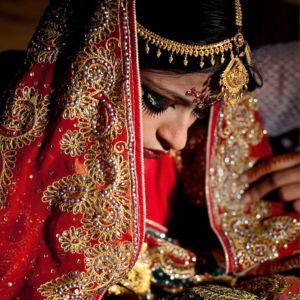
Plight of street girls
Plight of street girls
Published: Monday, 20 May, 2024 at 12:00 AM Count: 551
Countless young girls are living on the streets of Bangladesh. Robbed of their childhood and exposed to harsh realities, these girls face unimaginable challenges. The harsh realities of street life force these girls into desperate situations. They enter physical relationships with older men to secure basic needs like food and shelter. The consequences are dreadful. These young bodies are not physically or emotionally equipped for pregnancy and childbirth, leading to increased health risks for both mother and child. Furthermore, the cycle of poverty continues as they struggle to care for their newborns while facing their vulnerabilities.
This report aims to identify the gaps and factors of adolescent motherhood in Bangladesh. Recent studies have found that women’s education, husbands education, place of residence, ever use of contraceptive methods, religion, wealth, and region are important determinants of adolescent motherhood in Bangladesh. Several factors bring such a fate for homeless teenage girls. It starts with Poverty. Poverty is an inescapable force, pushing families to the edge. Orphans, often due to illness or accidents, lose the safety net of family support. Trafficking rings exploit their desperation, luring them with false promises of work, only to subject them to physical and sexual abuse. These girls lack access to education, which could empower them with knowledge and life skills. Article 17(A) of the constitution of Bangladesh guarantees free and compulsory education for all children. Despite that, societal stigma against single mothers creates a vicious cycle that limits their options.
A 2019 study by (Bangladesh Rehabilitation Assistance Committee) BRAC, a Bangladeshi development organization, sheds light on the magnitude of the problem. The study found that nearly 60% of female street children in Dhaka had become mothers by the age of 18, with a significant portion experiencing motherhood before 14.
Another study from the Bangladesh Demographic and Health Surveys starting from 1993-94 to 2014 found that the total sample size for this study was 48,877 at least once married women aged 15-49. More specifically, the number of adolescent girls aged 15-19 was 1,489 in 2004 BDHS, 1,292 in 2007 BDHS, 1857 in 2011 BDHS, and 1970 in 2014 BDHS. Thus, the total sample size of teenage girls in four waves of the BDHS was 6,608. In addition, the number of adult women aged 20 and above was 8,167 in the 2004 BDHS, 7,879 in the 2007 BDHS, 13,075 in the 2011 BDHS, and 13,148 in the 2014 BDHS. Therefore, the total sample size of adult women in four waves of the BDHS was 42,269.
Secondly, another factor that leads to adolescent motherhood is, "Child Trafficking." Child traffickers target girls from poor backgrounds, tempting them in the name of education or work opportunities. Once trafficked, these girls are subjected to physical and sexual abuse, forced into labour, and sometimes, into prostitution. This exploitation exposes them to a high risk of unwanted pregnancies.
Furthermore, traffickers use rape as a tool of control, resulting in unwanted pregnancies leaving them with lasting psychological scars, and impacting their ability to care for their newborns. A 2019 study by the Bangladesh National Women Lawyers Association (BNWLA) estimated that nearly 70% of rescued trafficking victims reported sexual violence, with a significant portion facing unwanted pregnancies. These numbers represent the need for continued research and awareness.
Financial Assistance: Offering financial aid to vulnerable families can help prevent them from pushing their daughters onto the streets. Education Scholarships: Scholarships specifically for girls from underprivileged backgrounds can help delay marriage and eventually pregnancy. Street Outreach Programs: Establishing safe spaces with educational programs can provide street children with basic literacy and physical education. Vocational Training: Equipping these girls with vocational skills can empower them to find decent jobs, nurturing economic independence and delaying early motherhood. Sexual and Reproductive Health Education: Providing access to comprehensive sexual and reproductive health education can equip girls with information on birth control methods and their rights. Healthcare Services: Ensuring access to quality healthcare, including pre and post-natal care, is crucial for the well-being of both young mothers and their babies.
For Combating Human Trafficking: Law Enforcement: Strengthening law enforcement agencies on human trafficking rings can help protect vulnerable girls from exploitation and forced situations leading to early motherhood. Breaking the cycle of exploitation and early motherhood demands a multifaceted approach. Strengthening social safety nets can provide vulnerable families with financial assistance, potentially preventing children from ending up on the streets.
The plight of parentless female street children who become single mothers before their adolescence is heartbreaking. By understanding the factors and implementing the solutions, we can offer these young girls a brighter future. Investing in education, healthcare, and social support programs can empower them to break free from the cycle of poverty and exploitation. These girls deserve a chance at a childhood - a chance to heal, learn, and build a life beyond the harsh realities of the street.